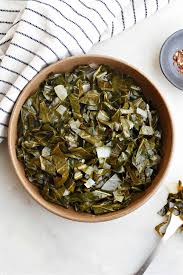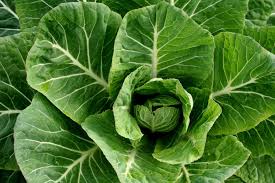By Barbara Pleasant
Collard greens, a staple in Southern cooking, are fast, easy to grow, and yield abundant harvests. As a member of the Brassica family, collards share a lineage with cabbage, but they have a distinct, heartier nature, especially suited for warmer climates. Unlike kale, which thrives in cooler regions, collards grow well in both hot and cold temperatures, making them ideal for fall gardens.
Growing Collard Greens
Collard greens are easy to grow and can be directly seeded or transplanted from seedlings. Plant seeds in late summer when temperatures cool, or set out seedlings for an even earlier harvest. Direct-seeding requires thinning, but you can use the thinned greens for other dishes. Once plants are spaced about 12 inches apart, you can begin harvesting the outer leaves. My small patch of 8-10 collard plants yields more than 60 servings, with approximately 200 leaves harvested over several weeks.
Collards love cool nights, especially with light frost, which enhances their flavor and sugar content. These sugars act as natural antifreeze, helping the plant survive winter temperatures down to 15°F (-9°C). For best results, I harvest my collards after the first frost in October when the greens are at their peak. In milder climates, collards can continue producing throughout the winter. I use row covers to protect them from pests like deer and freeze any surplus.

Why Grow Your Own?
One of the key reasons to grow your own collards is to avoid the use of pesticides. Commercially grown collards, along with kale, often contain toxic pesticides harmful to the nervous system. The Environmental Working Group named collard greens to their Dirty Dozen list due to this contamination. Growing organic collards or sourcing them from trusted local growers is a safer, healthier option.
Cooking Collard Greens
Collard greens are incredibly versatile, making them a perfect fit for plant-based diets. While traditionally slow-cooked with ham or bacon, collards can be prepared in various ways that highlight their nutritional value without the need for meat. When cooking, you can use whole or chopped leaves, depending on your dish. I prefer to blanch and freeze whole, medium-sized leaves for long-term storage. These leaves are durable yet flexible, and their sturdy texture makes them ideal for wrapping.

Blanching collard leaves for two minutes in boiling water softens them, making them perfect for a variety of uses. They can be rolled up and frozen for later use, or cut into strips that resemble fettucine for pasta dishes. Blanched collard greens also serve as a fantastic substitute for nori in sushi rolls, tortillas in enchiladas, or even as gluten-free lasagna noodles. I enjoy them rolled up with hummus and carrots for a quick, healthy snack.
For chopped collard greens, blanching for three minutes removes any bitterness, especially from greens harvested in warm weather. Once cooled and frozen, these greens are a great addition to soups, stews, and casseroles. I use them in spicy minestrone or creamy soups made with winter squash and potatoes. They also pair beautifully with legumes like beans and lentils. One of my favorite recipes involves sautéing collard greens with onions, garlic, and Indian spices, then mixing them with garbanzo beans, a dollop of yogurt, and a squeeze of lemon. The result is a flavorful, satisfying dish that will change anyone’s mind about collard greens.
Conclusion
Whether you’re growing them in your garden or purchasing them from an organic farm, collard greens are a nutritious, sustainable, and versatile vegetable. From their rich history to their culinary potential, they are a delicious addition to any meal. The next time you come across a bunch of collard greens, consider experimenting with some new recipes that highlight this often-underrated green. You might just find your new favorite dish!
